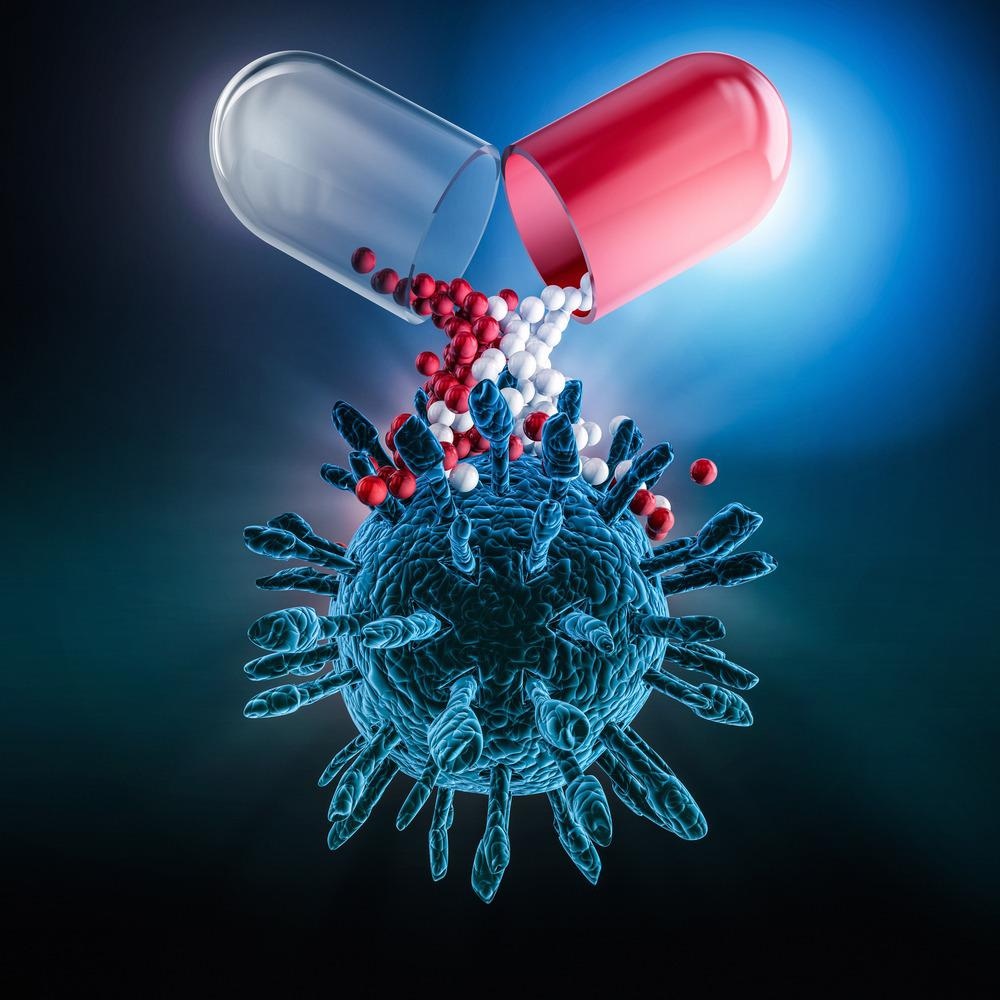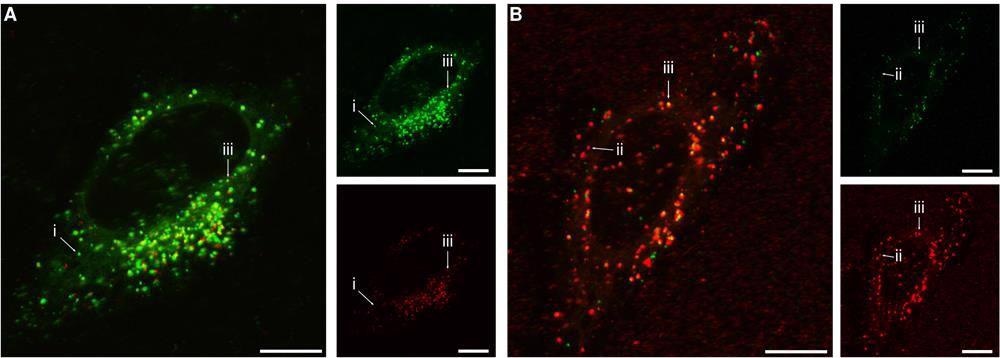Exciting and novel research has investigated the internalization of nanoparticles by cells to optimize drug delivery into target cells. This research, published within the journal, Pharmaceutics, aims to analyze the simultaneous uptake of two different types of nanoparticles into cells.

Study: Simultaneous Exposure of Different Nanoparticles Influences Cell Uptake. Image Credit: Double Brain/Shutterstock.com
Enhancing Drug Delivery Using Nanoparticles
Nanoparticles, sized within the nanoscale, between 1 and 100 nm, hold high efficacy for drug delivery due to their ability to interact with biological systems.
The use of nanocarriers to carry drugs to their target cells is one of the advantages of incorporating nanotechnology within medicine, especially with their surface functionalization ability which enables them to target cells more effectively. This allows them to be more beneficial than the conventional method of drug delivery which has a systemic effect and can cause adverse effects on all cells rather than just targeting specific cells.
Understanding how many carriers enter cells is critical for deciphering the intercellular dose that the target cells are provided to determine the efficacy of utilizing nanoparticles in this way and advancing drug delivery systems.
While this area of research has already been spearheaded with previous research with internalization pathways for particles being investigated, the effect of cell uptake when two different particles are exposed to the cell simultaneously is limited.
These investigations include reports of an increase in cell uptake of gold and iron nanoparticles when both particles were exposed to murine macrophages. However, another researcher has described changes to cellular function with simultaneous exposure, with carbon black and iron oxide particles exposed to human epithelial cells, possibly resulting in protein and lipid oxidation.
Interestingly, this novel research can be useful when enhancing drug delivery in the body by using two different particles that can be used for various applications to increase the efficacy of drug treatment for diseases and disorders.

Experimental setup. (A) Schematic showing the dispersion procedure we used to ensure that the concentration of the 100 nm particles was the same for all samples. A first dispersion of the 100 nm particles was prepared and then divided up. To the resulting samples, different small volumes of a 40 nm particle dispersion were added. The first and last sample were left without 40 nm particles to serve as controls. Note that the colours are schematic only. (B) Nanoparticle fluorescence of cells exposed to the two different control dispersions of the 100 nm particles mentioned in panel A (first and last sample; 20 μg/mL or 0.060 nM). The similarity of the signal is consistent with the two control samples having the same nanoparticle concentration. (C,D) Lack of cross-talk between the two particle signals. (C) Cells were exposed to only the 40 nm particles (100 μg/mL; 4.7 nM) and the fluorescence intensity measured at the same wavelengths where researchers measured the 100 nm particles (left axis). There is a low background signal (right bar), but this is comparable to control cells not exposed to any particles at all (left bar). (D) Cells were exposed to only the 100 nm particles (80 μg/mL; 0.24 nM) and the fluorescence intensity measured at the same wavelengths where we measure the 40 nm particles (right axis). There is a low background signal (right bar), but this is comparable to control cells not exposed to any particles at all (left bar). © De Boer I, Richards CJ, Åberg C. (2022)
Innovative Research
The researchers of this study exposed HeLa (adenocarcinomic human cervical epithelial) cells to two different sized carboxylated polystyrene nanoparticles, including 40 nm and 100 nm diameter particles labeled with different fluorescent dyes to track the movement.
They observed that smaller particles had an increased cell uptake in the presence of larger-sized particles while larger particle uptake was impeded in the presence of smaller particles. This confirmed previous research on simultaneous cell uptake.
However, this increase was confirmed of cells within a medium with serum and the formation of a biomolecular corona on particles, which was not the same as previous research within a serum-free medium.
This research can enable the understanding of whether the competition between different concentrations of various sized particles is dependent on cell types; through the examination of 2D fluorescence distribution of the two measurable particles, the results have illustrated all cells take up both particles, but this may be within varying levels.
A limitation of this research is a lack of comprehension about the uptake mechanisms underlying the competitive nature of two various sized nanoparticles. With further research, the cellular mechanisms of this uptake can be clarified to understand these observations.
Significant Implications for Enhanced Drug Delivery
This research can be utilized to enhance drug delivery with the presence of a second nanoparticle, such as one of a larger size with the aim of increasing the cellular uptake of the first nanoparticle. The implications of this can be significant for increasing the intercellular drug dose found within cells and can be a start to advancing nanotechnology-based drug delivery systems.
With nanoparticles already being able to be functionalized through surface ligands, the use of these as nanocarriers for drug delivery as well as secondary particles can be an innovative approach to increasing the therapeutic selectivity of cells.
This can be utilized for diseases and even for cancer treatment to develop particles that work together for enhanced drug delivery into target cells, sustained delivery, and possibly the clearance of the drug from the body. Innovative drug delivery systems with more control through this approach may be a step towards personalized medicine that prioritizes patient care.

Subcellular distribution of the 40 nm and 100 nm particles. Cells were exposed for 24 h to both the 40 nm and 100 nm particles simultaneously and then observed using confocal fluorescence microscopy. (A) Concentration of 100 and 40 nm particles 20 and 100 μg/mL, respectively (0.060 nM and 4.7 nM; conditions correspond to the highest 40 nm particle concentration in Figures 2 and S3). (B) Concentration of 40 and 100 nm particles 6.25 and 80 μg/mL, respectively (0.30 and 0.24 nM; conditions correspond to the highest 100 nm particle concentration in Figures 4 and S4). The larger images show overlaps of both fluorescence colours, while the smaller images show the individual colours. (Green) 40 nm particles; (red) 100 nm particles. Arrows show examples of (i) 40 nm particle( s) (green) in the absence of 100 nm particles; (ii) 100 nm particle(s) (red) in the absence of 40 nm particles; (iii) 40 and 100 nm particles in the same location. The results show that the two particles often end up in the same location, but not always. All scale bars correspond to 10 μm. © De Boer I, Richards CJ, Åberg C. (2022)
Continue reading: Antibacterial Properties of Tungsten Oxide
Reference
De Boer I, Richards CJ, Åberg C. (2022) Simultaneous Exposure of Different Nanoparticles Influences Cell Uptake. Pharmaceutics. 14(1):136. Available at: https://www.mdpi.com/1999-4923/14/1/136/htm
Further Reading
Li, L., Xi, W., Su, Q., Li, Y., Yan, G., Liu, Y., Wang, H. and Cao, A., (2019) Unexpected Size Effect: The Interplay between Different‐Sized Nanoparticles in Their Cellular Uptake. Small, 15(38), p.1901687. Available at: https://doi.org/10.1002/smll.201901687
Disclaimer: The views expressed here are those of the author expressed in their private capacity and do not necessarily represent the views of AZoM.com Limited T/A AZoNetwork the owner and operator of this website. This disclaimer forms part of the Terms and conditions of use of this website.